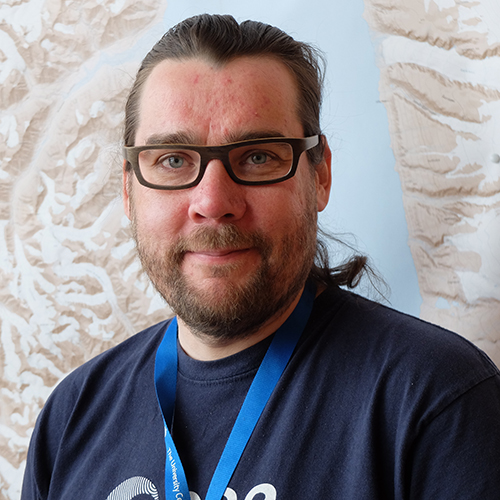AGF-312 Remote Sensing of the Cryosphere (10 ECTS)
ID:
AGF-312
CREDITS:
10 ECTS
APPLICATION DEADLINE:
April 15, 2024
START DATE:
September 23, 2024
END DATE:
November 01, 2024

AGF-312 during fieldwork on Longyearbreen moraine in 2023
| Grade: | Letter grade (A through F) |
| Course Cost: | None |
| Course Capacity Min/Max: | 10/20 students |
| Language of instruction: | English |
| Examination support material: | Bilingual dictionary between English and mother tongue |
Course requirements
Enrollment in a master program relevant to geophysics, arctic technology, cryosphere, remote sensing or space technology in general.
Academic content
The course provides a thorough grounding in the method of remote sensing and explains in detail the application of remote sensing to the measurement and monitoring of sea ice, snow cover, glaciers, and ice sheets. Remote sensing, especially by satellite, plays an ever increasing role in the gathering of geophysical data in a world subject to climate change. By virtue of its relative size and inaccessibility, understanding change in the cryosphere is particularly dependent on data collection by remote sensing.
The course will provide a theoretical understanding of the use of electromagnetic energy to sense elements of the cryosphere, a thorough training in the interpretation and processing of satellite data in a computer environment, and a detailed expert account of the role of remote sensing in understanding the significant and wide-ranging changes occurring in the cryosphere today.
Learning outcomes
Upon completing the course, the students will:
Knowledge
- An advanced knowledge of the purpose of remote sensing and its scope in measuring and monitoring sea ice, snow cover, glaciers and ice sheets.
- A thorough understanding of the academic applications of remote sensing applied to elements of the cryosphere and know the advantages and limitations of these techniques over other forms of data collection.
- An overview of current and future satellite missions relevant for the cryosphere.
Skills
- Interpret and analyse by computer a wide range of remote sensing data from various parts of the cryosphere.
- Acquire satellite data from online archives and extract geophysical information from them.
- Co-locate and compare in-situ field measurements and satellite data.
General competences
- Be able to acquire new information from remotely sensed data for a range of applications in the cryosphere, place these information in their proper context, and communicate the findings by written and oral means, including the diagrammatic presentation of geospatial data.
- Have gained awareness and appreciation of current research issues in remote sensing of the cryosphere.
Learning activities
The course extends over 5 weeks including compulsory safety training.
Summary
- Total lecture hours: 30 hours.
- Total computer practical hours: 48 hours.
- Total seminar hours: 8 hours.
- Field excursions: 4 days.
The effective learning of remote sensing has three essential components:
- General background and theory in physical principles of electromagnetic radiation, satellite operation, instrumentation design and image processing
- Practical experience in exploring and analysing satellite data and, where possible, comparing them to field measurements
- Detailed explanation of application-specific concepts and methods, and key findings from contemporary research
These components will be delivered through four weeks of thematic teaching including both field excursions and computer-lab practical sessions. The students must in addition prepare a project assignment (3000 words plus key remote sensing-based figures) which will assess skills in:
- Research of a suitable topic, selection of aims and objectives, creativity and innovation.
- Data selection, management and image analysis. Relating findings to the research context in journal articles.
- Presentation skills, especially in images and image products.
- Academic writing.
Compulsory learning activities
All compulsory learning activities must be approved in order to sit the exam.
- Field excursions
- Computer-lab practical sessions
- Student-led seminars
Assessment
- All assessments must be passed in order to pass the course.
- Each assessment is graded, and subsequently combined into a single grade. Partial grades for each assessment will be available.
| Method | Duration |
Percentage of final grade
|
| Written project report | 50% | |
| Oral Exam | 50% |
